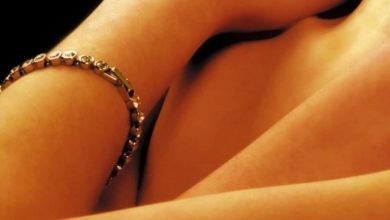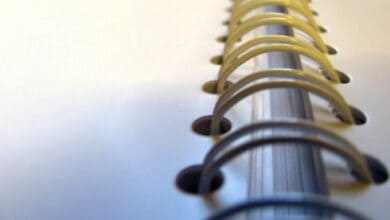In 2022, the Rice/Baylor Medical Scholars Program announced that they were taking their last cohort of students, which was shocking to some prospective BS/MD students and unsurprising to others. Perhaps some saw it coming, as Rice and Baylor clearly had differing opinions on how the program should evolve, while others saw it as a sign of the times.
The reality is that there have been an increasing number of BS/MD program closures. Some of those were high-profile schools, including:
- Boston University Seven-Year Liberal Arts/Medical Education Program
- The University of Cincinnati Dual Admissions Program
- Northwestern University Honors Program in Medical Education (HPME)
- Washington University in St. Louis University Scholars Program in Medicine (USPM)
The decision to close certain BS/MD programs at universities across the country has been driven by a variety of factors. These programs, which were initially established with the aim of attracting highly qualified students, have faced a changing landscape in recent years.
I work with students to write medical school applications that stand out, and the first step to getting that right is choosing the right type of program. Here’s what you need to know about the changing landscape of direct medical programs if you’re a pre-med student considering a BS/MD.
Why Many BS/MD Programs Have Closed
The evolving identity and reputation of the universities hosting BS/MD programs, a factor that led to the introduction of direct medical programs, has continued to shape the landscape of viable pathways to medical school.
For instance, Boston University (BU) established its BS/MD program in the late 1960s to attract highly talented students. However, BU has since grown into a well-respected institution with strong undergraduate and medical school programs. Consequently, BU now receives a significant number of highly qualified applicants directly to its medical school, reducing the need for a separate BS/MD program.
One of the key reasons cited for program closures is a shifting perception of their effectiveness in building a diverse student body. Despite the intention of these programs, it has become evident that the presence of BS/MD programs alone may not be sufficient to address the broader issues of diversity and inclusivity in medical education.
As a result, some institutions have redirected their resources toward alternative strategies to promote diversity, such as targeted recruitment efforts, scholarship programs, or pipeline initiatives aimed at underrepresented minority students.
The Viability of BS/MD Programs
An increasing number of physicians and program directors are concerned that the rigors of BS/MD programs do not leave room for diverse experiences in medicine that contribute to developing well-rounded physicians.
Two of the more glaring factors that contribute to this concern are:
- Students must stay at one institution for up to 8 years
- The timeline of a BS/MD program is more accelerated than the traditional pre-med route
Additionally, some of the typical benefits of a BS/MD program, like exemptions from taking the MCAT and unconditional admission to medical school, are being removed from many programs. This makes schedules for BS/MD students tighter and the focus on academics as opposed to a more well-rounded experience, potentially without significant benefit to the student.
As a reflection of this turn away from direct medical programs, several remaining BS/MD programs have reduced the number of available seats, despite competition remaining higher than ever.
In 2023, around 22,712 students began their medical school journey in the United States. At the same time, there were 49 Bachelor of Science/Medical Doctorate (BS/MD) programs across the country.
Assuming each of these programs admits an average of 12 students annually, roughly 588 students enter BS/MD programs each year. This accounts for less than 3% of all medical students. The reality is that most students in the United States still take the traditional path to becoming doctors, which involves finishing a bachelor’s degree first and then applying to separately to medical school.
Read Preaksha’s Story: The Remarkable Journey of a BS/MD Student
The Advantages of the Traditional Pre-Med Pathway
Opting for the traditional pathway to medical school has its advantages. First, it offers more options for undergraduate institutions, including Ivy League schools (Brown University is the only Ivy that has a direct medical program).
The increase in options extends to medical schools, too. Having more options enables you to tailor your medical education to your needs and goals, including location, increasing your chances of success.
Second, choosing the traditional pathway enables you to map out a timeline and financial cost that works for your situation. You can spend time gaining valuable clinical experience or serving your local community.
Also, many BS/MD programs are located at private universities, and the ones at public universities often prioritize in-state residents. This means students might end up paying private school tuition for both their undergraduate and medical education, which can be a lot more expensive compared to in-state tuition. If you plan on attending a state university, this should be a huge (and potentially cost-saving) point of consideration.
According to the AAMC, the top 3 major categories with the highest medical school acceptance rates are:
- Humanities
- Math and statistics
- Physical sciences
Humanities majors enjoy a 51% acceptance rate to medical school.
Now, more than ever, medical schools and residency programs are looking for students who offer different perspectives and skill sets that benefit the medical field. While students enrolled in BS/MD programs can also major in any subject they wish, the flexibility of time and ability to ensure you are going to a top school for your selected major is an advantage of the traditional pre-med pathway.
Another factor to consider is that it is harder to move away from medicine and change majors while enrolled in a BS/MD program than in an undergraduate degree program. Leaving a BS/MD is heavily frowned upon, and will impact your journey moving forward, especially if you want to continue pursuing medicine.
[WATCH] Webinar: From High School to Medical School
Why the BS/MD Pathway May or May Not Work for You
Of course, direct medical programs have their advantages as well:
- Many BS/MD programs still guarantee medical school admission even without the MCAT.
- BS/MD students do not need to pay for multiple medical school applications and interviews, which can cost thousands of dollars.
- Some programs can even save you a year’s worth of undergraduate tuition if they last for 7 years.
- If you are able to finish the undergraduate portion of your program early, you can still pursue additional degrees like MBAs and MPHs or complete fellowships.
Students enrolled in BS/MD programs also have the luxury of not having to stress over another admissions process. Applying to medical school is a hyper-competitive endeavor and not needing to engage in that process can prevent a lot of anxiety and allow you to channel your focus to what matters most — your education.
However, that luxury comes at a high price. Acceptance rates to BS/MD programs are lower than Ivy League schools (usually between 2% and 5%), and much lower than the average medical school acceptance rate (which is 41% for MD programs).
Translation? The application process for BS/MDs is stressful and unforgiving, even for students with the highest GPAs and SAT or ACT scores.
Moreover, typically, BS/MD applicants only get accepted to one or two programs (if they are accepted at all), often in faraway places and at schools that they are not thrilled about attending. This can make adjusting to both undergraduate life and medical school difficult.
[LISTEN] The Prospective Doctor Podcast EP. 53: BS/MD Programs
Deciding What is Best for You is Key
Deciding to become a physician at any age is a huge decision. Whether you are considering the direct medical or traditional pre-med pathway, you should carefully weigh the benefits against the drawbacks before making your decision.
Out of every 100 students who start their journey to becoming a physician at the start of their undergraduate career, only 15 will make it to medical school. Increase your chances of being one of those 15 by choosing a pathway that is designed to help you succeed and enjoy the journey.
Schedule a meeting with the enrollment team with our friends at MedSchoolCoach to see how we can help you boost your chances of getting into the best BS/MD or premed program.



